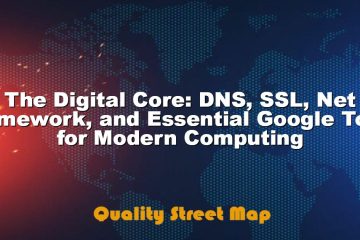What is TCP Monitoring? Essential for Transmission Control Protocol Health

Understanding TCP Monitoring Basics
The Transmission Control Protocol (TCP) is a fundamental communication standard that enables the reliable delivery of data across networks. However, detecting and resolving issues within this protocol is vital for maintaining network performance. Understanding the basics of TCP monitoring is essential because it allows network administrators to identify disruptions, ensure data integrity, and enhance overall user experience. What is significant about TCP monitoring is its ability to provide insights into data flow issues and indicate potential areas of concern, thereby facilitating proactive maintenance approaches.
“Effective TCP monitoring is akin to providing a compass for network navigators, allowing them to steer through complex data streams efficiently.”
Before diving into the more advanced strategies of TCP monitoring, grasping the basics is key. Monitoring typically involves capturing packets, examining latency, and analyzing retransmission rates. These components reflect how well the protocol is performing and help in pinpointing the root cause of any inefficiencies. Additionally, protocols like TCP often operate with mechanisms such as window sizing and flow control, highlighting the vitality of regular monitoring. Understanding these can significantly reduce downtime and ensure that the network operates seamlessly.
Reasons To Monitor TCP
- Identifying congestion in the network
- Improving data transmission efficiency
- Ensuring data integrity during transfer
- Detecting network bottlenecks
- Enhancing user experience through stability
- Maintaining high availability and uptime
- Preventing potential security breaches
The importance of TCP monitoring is further underscored by the complexities involved in modern networks. As networks evolve with increasing data volumes and sophisticated applications, monitoring TCP becomes an indispensable practice. Without regular monitoring, issues such as packet loss or latency spikes can degrade performance and disrupt service delivery. Hence, employing dedicated tools for tracking the parameters of TCP ensures consistent network health and Swift response to anomalies.
In summary, what is essential about TCP monitoring is not just identifying when failures occur but also understanding why they happen. Armed with this knowledge, network managers can quickly resolve issues and optimize the protocol’s performance, ensuring seamless data transmission and a robust communication network. As part of a comprehensive monitoring strategy, regular scrutiny of TCP parameters is a proactive step toward maintaining an effective and efficient network infrastructure.
Benefits And Challenges Of TCP Monitoring
Understanding what is TCP monitoring can greatly influence the effectiveness of network management. Monitoring the Transmission Control Protocol (TCP) is crucial for maintaining the stability and performance of network communications. Correctly identifying and addressing anomalies in TCP facilitates seamless data transmission. However, as with any technology, equipping an organization with TCP monitoring involves both advantages and hurdles that need careful consideration. In the following sections, we will explore the primary benefits and common challenges associated with TCP monitoring.
Main Benefits
Implementing TCP monitoring provides organizations with several advantages. Real-time data analysis allows network administrators to swiftly identify and resolve issues, ensuring maximum uptime for systems. Another significant benefit is the ability to optimize network performance by analyzing traffic patterns, thus enabling proactive adjustments. Enhanced security through immediate detection of suspicious activities further underscores the importance of TCP monitoring. As networks expand, the scalability of monitoring solutions allows for consistent performance across diverse environments.
Key Benefits And Challenges
- Ensures real-time data monitoring and swift issue resolution
- Optimizes network performance by analyzing traffic patterns
- Enhances security with immediate detection of anomalies
- Scalable solutions for expansive network environments
- Requires understanding and handling initial setup complexities
- May necessitate investment in specialized tools and training
Common Challenges
Despite its benefits, TCP monitoring presents several challenges. One primary concern is the complexity involved in setting up and maintaining monitoring systems, which can be time-consuming and require specialized expertise. Additionally, the initial investment in reliable monitoring tools can be substantial, particularly for organizations with budget constraints. There might also be challenges related to data overload, where the sheer volume of information can overwhelm network administrators. Effectively navigating through these challenges is crucial for reaping the full benefits of TCP monitoring.
Real-life Examples
The application of TCP monitoring in real-world scenarios highlights both its advantages and challenges. For instance, large tech firms have successfully enhanced their network performance through vigilant TCP monitoring, leading to improved customer satisfaction. Conversely, some smaller businesses have faced difficulties due to inadequate training and resource allocation, impacting their overall efficiency. The success of TCP monitoring in any organization hinges on the balance between resource investment and proficient execution. These examples serve as a reminder that while TCP monitoring is a powerful tool, its efficacy depends largely on the strategic deployment and management by the organization.
Implementing Effective TCP Monitoring Strategies
For businesses that rely on network performance, understanding what is TCP monitoring and its efficacy in maintaining the health of Transmission Control Protocol is indispensable. Implementing effective TCP monitoring strategies involves advanced techniques that offer real-time insights into network behaviors. These insights are crucial for diagnosing potential issues early and ensuring a seamless data flow across the network. The right strategies can mean the difference between a network that operates smoothly and one that suffers from frequent bottlenecks and downtime.
Effective TCP monitoring can lead to substantial improvements in network reliability and efficiency. To get started, it is essential to follow a structured approach that includes utilizing the right tools and frameworks. A strategic, well-thought-out implementation can eliminate many common network issues before they impact users. The following steps for effective TCP monitoring include crucial actions to optimize your strategy:
Steps For Effective TCP Monitoring
- Identify key performance indicators (KPIs) such as latency, bandwidth usage, and packet loss.
- Deploy robust monitoring tools tailored to your network architecture.
- Set up alerts for critical threshold levels to enable prompt responses.
- Regularly analyze collected data for unusual patterns or anomalies.
- Use trend analysis to predict future needs and mitigate potential risks.
- Continuously update your monitoring approach based on technological advancements.
- Conduct periodic audits to ensure all systems are functioning effectively.
Carrying out these steps requires a coordinated effort across the IT team, ensuring that every part of your network monitoring ecosystem is functioning optimally. It’s also vital to keep abreast of the latest developments in monitoring tools and methodologies. Continuous improvement and adaptation not only help in maintaining protocol health but also prepare your network infrastructure to tackle future challenges. By doing so, organizations can sustain reliable service delivery and enhance overall technology infrastructure.
Integrating advanced analytics into TCP monitoring processes can significantly enhance the efficiency and responsiveness of a network. In the words of network specialists, “Proactive monitoring is not just about detecting issues but preventing them.” By prioritizing proactive strategies and employing sophisticated tools, businesses can ensure robust network performance. The effectiveness of these strategies hinges on consistent monitoring, strategic implementation, and embracing technological evolution.













